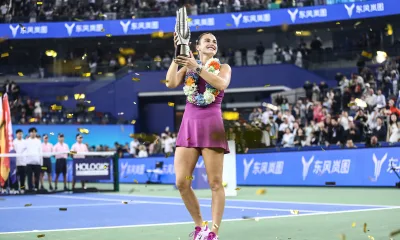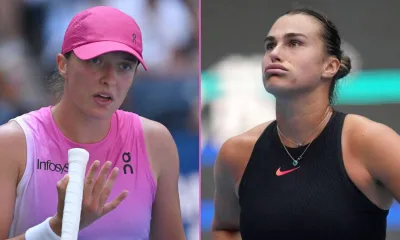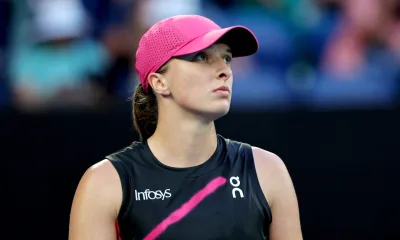Player News Tennis Coaching WTA
Swiatek on adapting to Wim Fissette: patience, proof and a mid-season turnaround
Swiatek describes working with Wim Fissette: slow start, technical changes, results now and details.
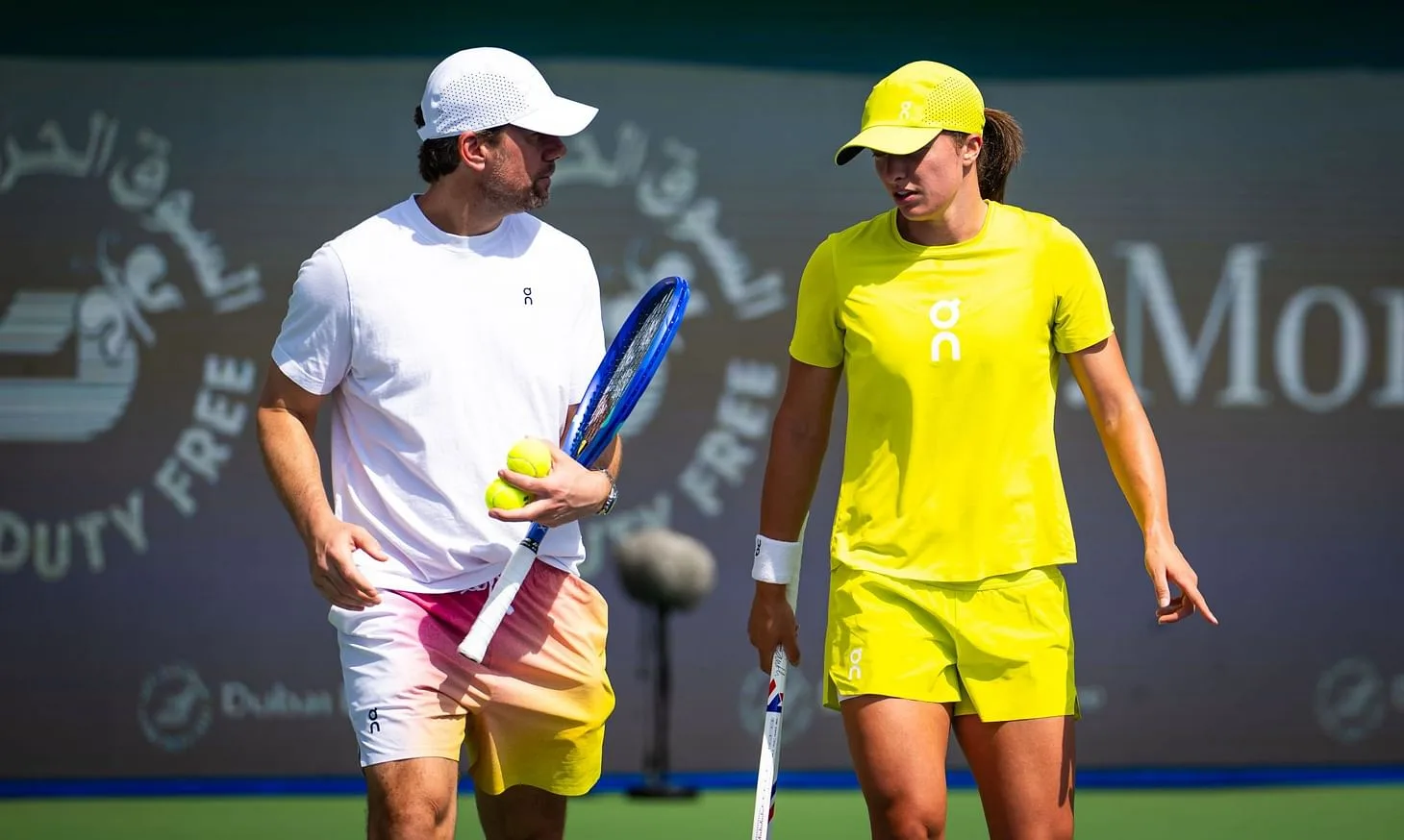
Iga Swiatek has worked through a period of adjustment since confirming Wim Fissette would join her team following her split with Tomasz Wiktorowski in October last year. The former world No 1 endured a slow first half of the season, failing to reach a WTA Tour singles final and unable to defend titles in Madrid, Rome and Roland Garros.
Form began to shift after the grass swing. Swiatek was runner-up at the Bad Homburg Open and then captured Wimbledon, taking her Grand Slam total to six. An earlier-than-expected exit in Canada followed, but she responded by winning the Cincinnati Open and is now widely regarded as the favourite for the US Open.
Asked about how she and Fissette work together a little under a year into the collaboration, Swiatek was candid about her approach to change. “I’m a bit stubborn, so if I have a different idea, then I need for sure some persuasion and also I need some proof, you know, if I’m going to go on court and feel that, oh, yeah, this is actually working and it helps me, then for sure I’ll go for it.
“You know, there’s no doubt if I need some days of practice, there might be some, you know, discussion and everything.
“So Wim also has to be patient. But I think he already knows that and he accepts that. So it depends, you know, it depends on what the tip is, if it’s like a big technical change or just a small adjustment, you know. And yeah, I would say I am a quick learner, but I’m this kind of player that really needs to like repeat the new thing from time to time.
“But I think everybody has it. Like the technique will sometimes go back to the old habits, you know. But yeah, everything he said for me made sense and if it didn’t, then we just had to talk more and he had to explain a bit more and then I had to try again and again and then it started working. So it depends on a certain situation.
“Does he come ready with proof now? Well, the proof is when I play it and when it works. So he has no influence on that kind of only I can prove if it’s good or bad.”
Swiatek and Fissette made deliberate technical changes in the off-season to address problems on faster courts. “We really focused on that [playing on faster courts]. The whole pre-season was basically about that. And I already could use some of these new skills kind of that I learned in Australia. But later on I think the season got a bit more complicated from other perspectives,” she said.
“So I wasn’t really in a good zone to win the tournaments. But I would say after Roland Garros, I kind of got back to my usual self and. And yeah, again, I would say the process of learning all this stuff that I learned in pre-season kind of came back.
“And for sure I used it on Wimbledon and on hard courts in Cincinnati. And we’ll see what’s going to come next.”
ATP Player News WTA
Sabalenka and Kyrgios to meet in Dubai ‘Battle of the Sexes’ exhibition
Sabalenka and Kyrgios will meet in Dubai on Dec. 28 for a ‘Battle of the Sexes’ exhibition. indoors.
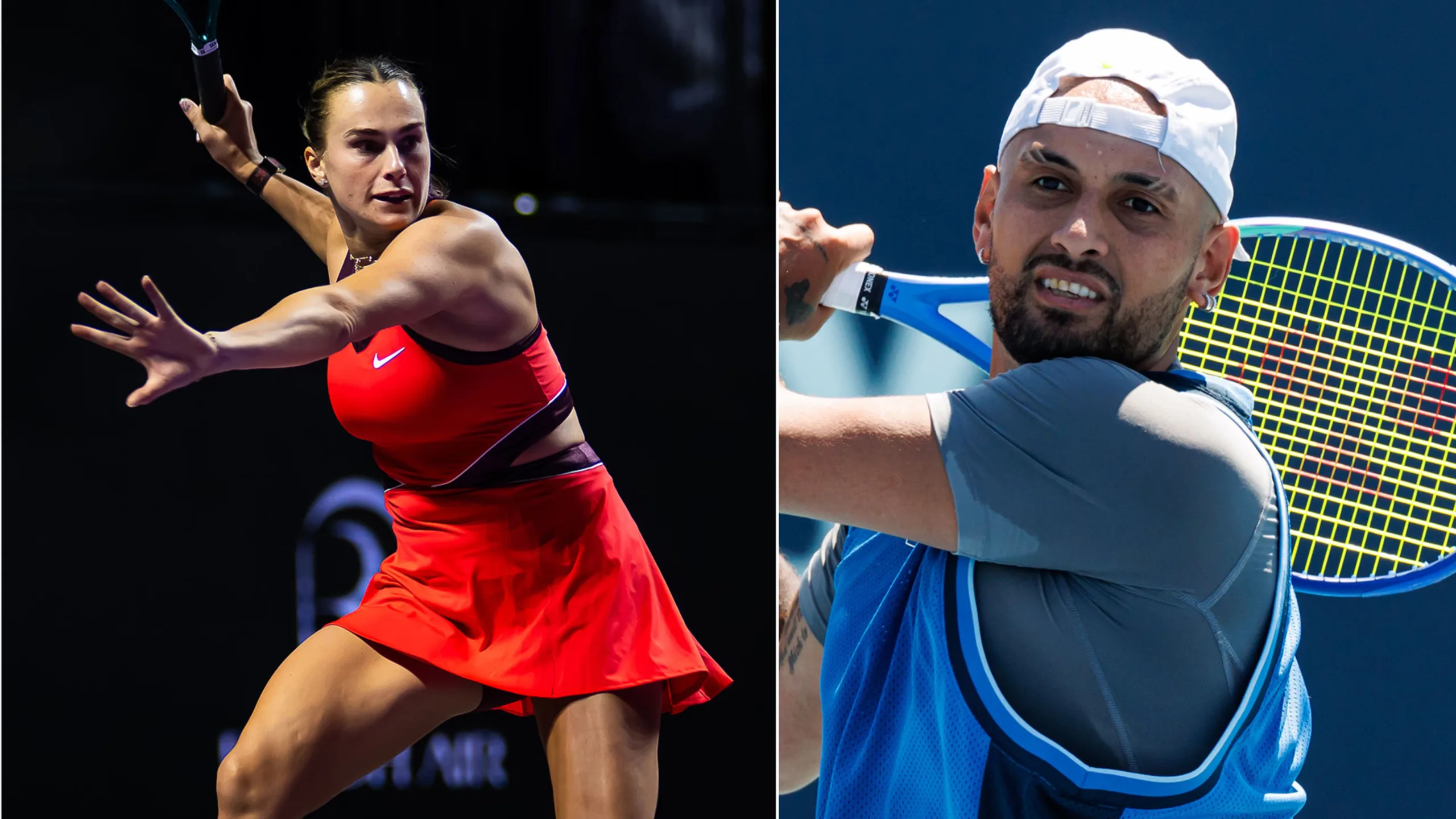
Top-ranked Aryna Sabalenka and former Wimbledon finalist Nick Kyrgios are scheduled to face each other in a “Battle of the Sexes” exhibition set for Dec. 28 in Dubai. The match will be played indoors at the 17,000-seat Coca-Cola Arena, and both players posted logistical details on their social media channels after Sabalenka confirmed during the U.S. Open that discussions for the match were underway.
Before their head-to-head meeting in Dubai, both players will take part in an exhibition in New York on Dec. 8, though they will not play one another there. Sabalenka will face Naomi Osaka and Kyrgios will play Tommy Paul in that event.
Kyrgios has outlined specific conditions for the Dubai match, saying he would get only one serve and would be hitting toward a smaller side of the court. The Australian, who has barely played in recent years because of injuries, has predicted he will win easily.
“I cannot wait to get back out on court,” Kyrgios said in an Instagram story. “Honestly I’m feeling amazing. I never thought I would be back into this position, being able to travel the world, see my fans and play some amazing tennis.”
The exhibition borrows its name from the famous 1973 meeting between Billie Jean King and Bobby Riggs, a match King won in straight sets in the Houston Astrodome. Sabalenka enters the off-season as a four-time Grand Slam champion and one of the top attractions on the women’s tour, while Kyrgios returns to a spotlighted appearance after a period of limited competitive play.
Billie Jean King Cup Governing Bodies Player News
Alizé Cornet named captain of France’s Billie Jean King Cup team
Alize Cornet named France Billie Jean King Cup captain after retiring; will prepare Olympic team…
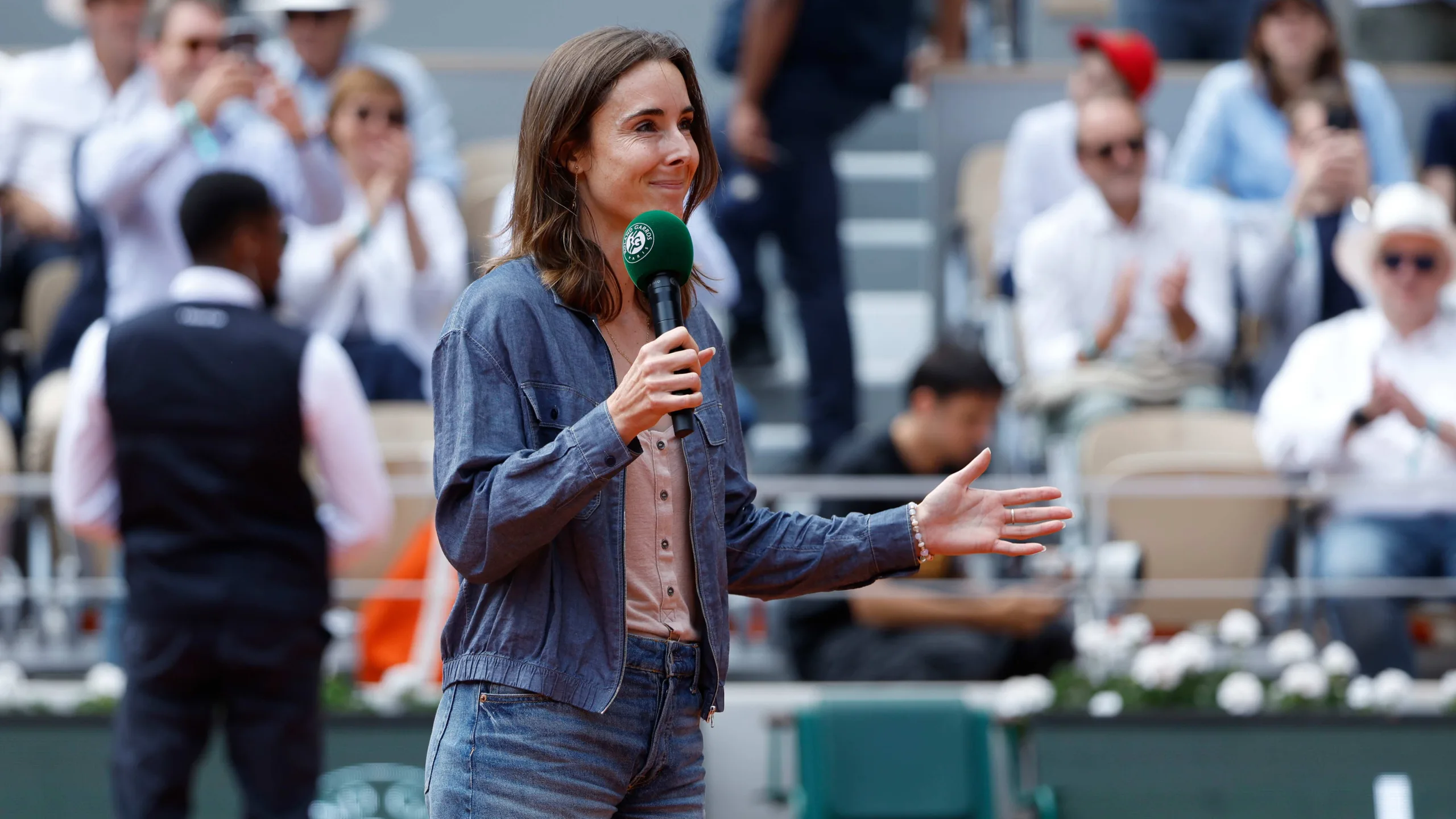
Alizé Cornet has been appointed captain of France’s Billie Jean King Cup team a few months after retiring from tennis a second time earlier this year. The French tennis federation announced the nomination on Sunday, saying Cornet stood out from other candidates because of her “investment in French tennis, her profile, her motivation and her availability.”
The 35-year-old replaces Julien Benneteau, who held the role since 2019. Cornet’s remit will extend beyond the Billie Jean King Cup squad and includes preparing the French Olympic team leading up to the Los Angeles Games in 2028, monitoring national team players during competitions and overseeing youth teams.
“I appreciate the trust the federation has placed in me, and I am determined to do everything I can to help our players reach their full potential,” Cornet said in a statement. “My goal is to build a strong team spirit, based on high standards, solidarity, and a passion for the French jersey.”
Cornet brings the experience of a 20-year professional career to the role. Touted as a young prodigy, she achieved a career-high ranking of No. 11 in 2009 and won six singles titles. Known as a solid baseline player with a strong backhand, she also held the women’s record for most consecutive Grand Slam tournaments played at 69, a streak that ran from the 2007 Australian Open to last year’s French Open.
The federation emphasized Cornet’s availability and motivation when confirming the appointment. Her new duties place her at the centre of France’s national-team planning as preparations begin toward future international events and the 2028 Olympic cycle.
Analytics & Stats Player News Tennis Coaching
Alcaraz’s off-hand: the hidden engine behind his forehand
Alcaraz’s extended off-hand increases shoulder coil, storing energy that fuels his explosive forehand

Watch almost any top-level player hit a forehand and you will notice the off-hand is not idle. During the takeback it helps position the racquet and rotate the upper body, creating structure and stored energy to release into the shot. For most players the hands separate during the takeback and the off-arm stays parallel to the net.
The current men’s No. 1 takes a different route. Where most players let go of the racquet’s throat when the off-arm is just about parallel to the net, he holds it until his left hand is even with his hitting shoulder. That retained contact changes how his stroke loads and unloads.
Keeping the off-hand on the racquet longer creates greater upper body tension. Mimic his turn and you can feel the stretch in the lats. The added shoulder rotation builds more stored energy that can be transferred into the swing. Yet the result is not a bigger, slower motion. He turns his shoulders more while maintaining a compact geometry: a bent hitting elbow and the racquet head level with the chest, similar to players who use a more modest shoulder turn.
That combination lets him generate faster swing speed without an exaggerated path. He uncoils with a relatively loose arm and so produces immense racquet head speed without relying on an extreme loop or oversized swing.
He is not a template everyone can copy. Few players can replicate his range of motion, upper body flexibility or world-class timing. Even so, approximating a deeper shoulder coil and delaying the separation of the off-hand can measurably increase the amount of energy available to a forehand. For players and coaches focused on adding speed and consistency, the lesson is clear: the off-hand is an active tool for storing rotation-based power, not merely a balancing aid.
-

 Analytics & StatsATPUS Open2 months ago
Analytics & StatsATPUS Open2 months agoSinner: Predictability Cost Me in US Open Final as Cahill Reveals Djokovic’s Counsel
-

 Analytics & StatsUS OpenWTA2 months ago
Analytics & StatsUS OpenWTA2 months agoAfter the US Open: Six WTA takeaways from the 2025 tournament
-

 Analytics & StatsFinalsWTA2 months ago
Analytics & StatsFinalsWTA2 months agoCan Iga Swiatek Overturn Aryna Sabalenka for 2025 Year-End No 1?


